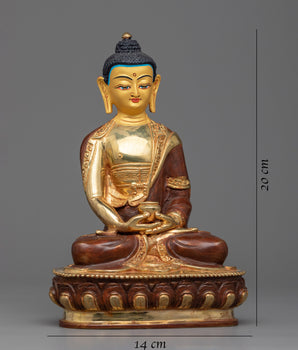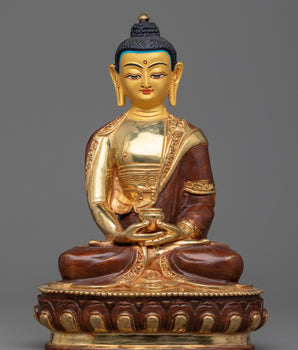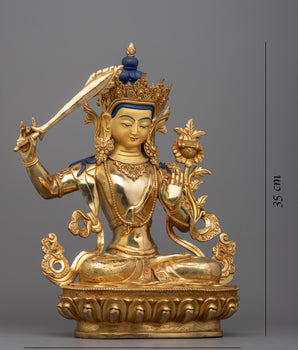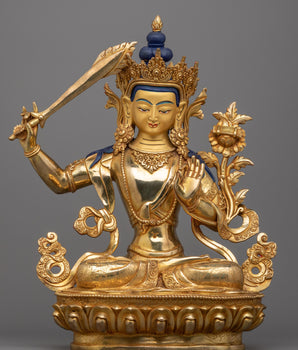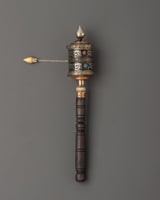
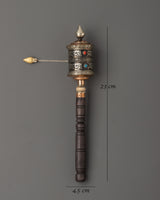


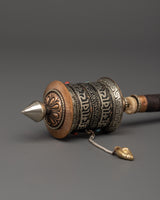
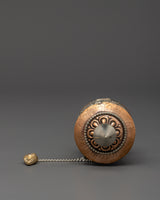
Handheld Tibetan Prayer Wheel | Spiritual Mantra Practice

100% AUTHENTIC

HANDMADE

FREE SHIPPING
Handheld Tibetan Prayer Wheel - Rituals & Meditation
--------------------------------------------------------
Size: 23cm (Height) x 4.5cm (Width)
Weight: 0.054kg
Materials: Copper Body, Brass, White Metal, Wood
--------------------------------------------------------
About our Prayer Wheel
This exquisitely crafted handheld Tibetan prayer wheel, crafted from wood, copper, brass, and white metal, can help you deepen your spiritual practice. Symbolizing compassion and spiritual awakening, this traditional spinner measures 23 cm in height and 4.5 cm in breadth. It is adorned with subtle gemstone accents and written with the sacred "Om Mani Padme Hum" mantra.
With its well-balanced body and smooth timber handle, this prayer wheel is ideal for meditative walking, daily rituals, and mantra recitation. It weighs only 0.054 kg. With each turn, the weighted chain and top finial promote fluid spinning, believed to purify one's karma and emit blessings. This sculpture combines genuine Himalayan artistry with spiritual practicality, making it suitable for both practitioners and collectors.
Introduction to Prayer Wheel
A prayer wheel is a cylindrical device on a spindle, used in Tibetan Buddhism. It is typically inscribed with the mantra "Om Mani Padme Hum" and rotated by hand as a form of spiritual practice and to accumulate merit. Spinning the wheel is believed to have the same spiritual benefits as verbally reciting the mantra. The use of prayer wheels is widespread in Tibetan Buddhism and has spread to other cultures.
How does the Buddhist Prayer Wheel benefit us?
The benefits associated with rotating the wheel are numerous. It promotes knowledge, compassion, and bodhicitta in the practitioner and improves siddhis (spiritual powers such as clairvoyance, precognition, etc.). The practitioner can repeat the mantra as often as possible while the wheel is rolling, maintaining a calm, meditative attitude. A Tibetan Buddhist tradition holds that after a practice session, one should dedicate any acquired merits to the benefit of all sentient beings. Then three times Om Ah Hum. This is usually among Tibetans after finishing any Buddhist practice, including the prayer wheel exercise.
How do you set up your own Buddhist Shrine?
• Find a clean, quiet, and uncluttered spot
• Set up an altar table and cover it with an altar cloth that calls to you
• Place your sacred item at the center











